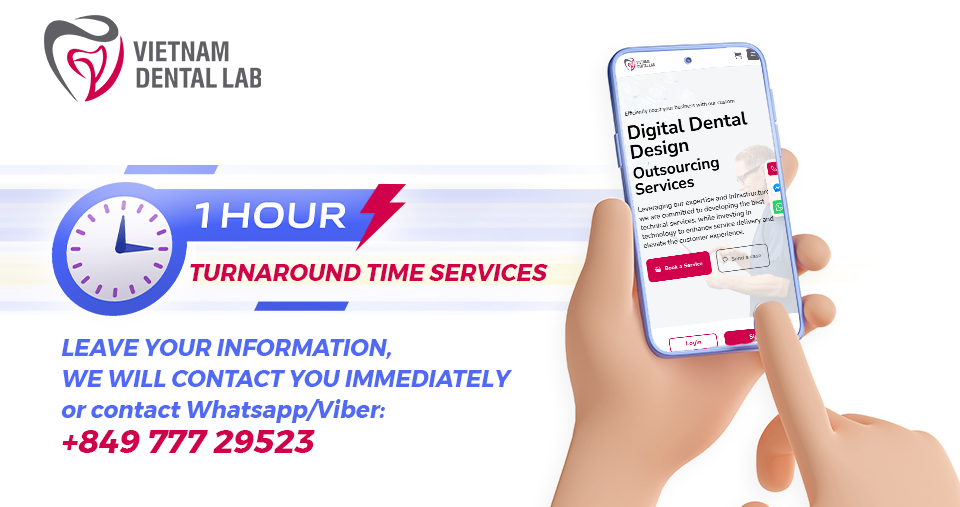No products in the cart.

Cad design Services
Diagnostic waxup
Smile design
Implants
Crown & Brigde
Night guard
Aligners
Implants have become an integral part of modern dentistry, providing a reliable and predictable solution for tooth replacement. The screw-retained cutback technique leverages the stability and versatility of implants to create restorations that are both functional and aesthetically pleasing.
The choice of implant abutment is a critical factor in the success of screw-retained cutback restorations. Dentists must carefully evaluate the clinical situation and select the abutment that provides optimal support and facilitates the ideal placement of the restoration.
Achieving a balanced occlusal scheme is crucial for the long-term success of screw-retained cutback restorations. Proper occlusal planning ensures that the forces generated during function are distributed evenly across the implant and surrounding structures, minimizing the risk of complications.
Patient education and compliance with proper oral hygiene practices are essential for the long-term success of screw-retained cutback restorations. Clinicians must provide detailed instructions to patients regarding brushing, flossing techniques, and the importance of regular dental check-ups.
The integration of digital technologies, particularly CAD/CAM (Computer-Aided Design/Computer-Aided Manufacturing) systems, has revolutionized the field of implant dentistry, including the fabrication of screw-retained cutback restorations.
Digital design and fabrication processes enable dentists and technicians to create highly accurate and precise restorations, minimizing discrepancies and ensuring optimal fit. The use of 3D imaging and specialized software allows for meticulous planning and execution, leading to improved clinical outcomes.
Digital models and designs facilitate seamless communication and collaboration between clinicians and dental technicians. This ensures that the restoration is fabricated according to the prescribed specifications, reducing the risk of errors and enhancing the overall quality of the final product.
Digital design empowers clinicians to tailor restorations to meet the unique needs and preferences of each patient. From intricate detailing to modifications based on individual characteristics, this level of customization is crucial for achieving optimal esthetics and functionality.
The integration of digital technologies in dental laboratories has streamlined the workflow, leading to greater efficiency and reduced turnaround times. This allows for increased access to advanced restorative techniques, such as screw-retained cutback, for a broader range of patients in Vietnam.
Vietnam’s dental landscape has witnessed a remarkable transformation, driven by the growing demand for advanced dental treatments and technologies. The country’s dental laboratories have embraced digital dentistry, playing a crucial role in the fabrication of high-quality screw-retained cutback restorations.
Many dental laboratories in Vietnam are equipped with state-of-the-art CAD/CAM technologies, enabling them to design and fabricate screw-retained cutback restorations with exceptional precision and attention to detail. These digital capabilities have been instrumental in improving the overall quality and consistency of implant-supported restorations.
Ensuring consistent quality and accuracy in restoration fabrication across different laboratories is a key challenge in the Vietnamese dental industry. Dental labs are implementing comprehensive quality control measures and training programs to maintain high standards and provide reliable services to clinicians and patients.
The integration of digital technologies has fostered greater collaboration between dental labs, clinicians, and researchers in Vietnam. This exchange of knowledge and best practices has contributed to the continued development and refinement of screw-retained cutback techniques, benefiting both practitioners and patients.
While the cost of advanced digital equipment and training can be a barrier for some dental practitioners in Vietnam, efforts are being made to address this challenge. Increased government support and educational initiatives can help make these technologies more accessible and affordable, promoting the wider adoption of screw-retained cutback restorations.
Screw-retained cutback restorations offer a range of advantages, but it is essential to also consider potential drawbacks and limitations.
Screw-retained cutback restorations have been successfully applied in a wide range of clinical scenarios, from single-tooth replacements to full-arch rehabilitation. Exploring real-world clinical cases can provide valuable insights into the best practices and considerations for achieving optimal outcomes.
In a case of a missing central incisor, a screw-retained cutback restoration was utilized to restore the missing tooth. The strategic placement of the screw access channel on the lingual surface, coupled with the use of a highly esthetic material, such as zirconia, resulted in a natural-looking and seamless restoration that blended harmoniously with the surrounding dentition.
In a case involving the replacement of several missing teeth, a screw-retained cutback bridge was fabricated. The ability to precisely adapt the restoration to the underlying abutments and the retrievable nature of the design facilitated thorough cleaning and maintenance, ensuring the long-term health of the supporting implants and surrounding tissues.
For a patient requiring a complete restoration of the maxillary arch, a screw-retained cutback approach was employed. The versatility of this technique allowed for the creation of a functional and esthetically pleasing full-arch prosthesis, which provided the patient with a natural-looking and comfortable solution.
As the field of digital dentistry continues to evolve, it is essential for dental professionals to engage in ongoing education and training to stay abreast of the latest advancements in screw-retained cutback restorations. Regular workshops, seminars, and mentorship programs can equip clinicians with the necessary knowledge and skills to deliver exceptional care to their patients.
The screw-retained cutback technique has emerged as a valuable tool in the realm of implant dentistry, offering a unique combination of esthetics, function, and longevity. The integration of digital dental design has further enhanced the precision and customization of these restorations, contributing to their widespread adoption in Vietnam’s dental landscape.
As the demand for advanced dental treatments continues to grow, the collaboration between clinicians, dental technicians, and researchers will be crucial in driving the ongoing development and refinement of screw-retained cutback technology. By embracing these innovations and upholding the highest standards of care, the dental community in Vietnam can continue to provide patients with exceptional and predictable implant-supported restorations.